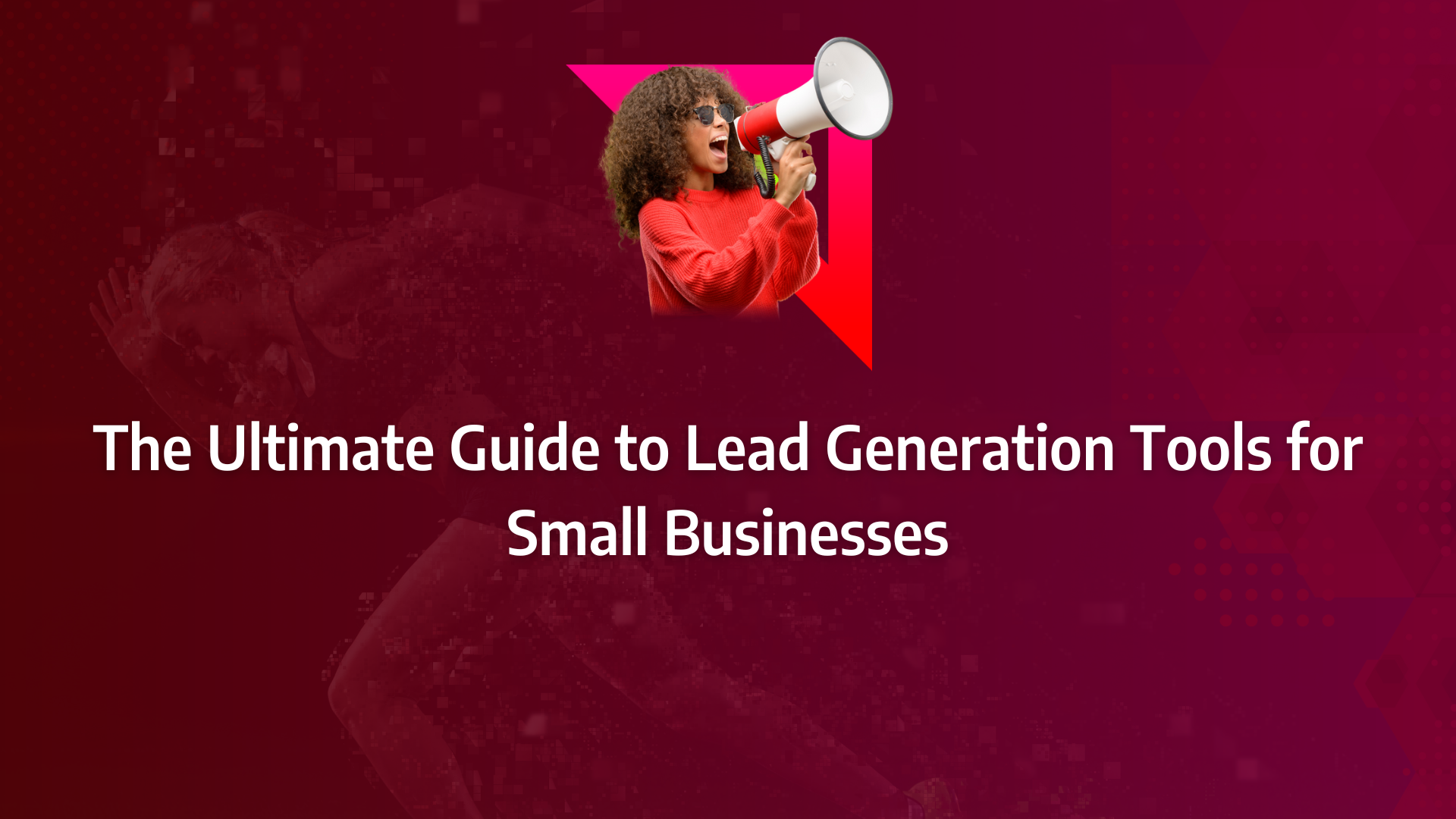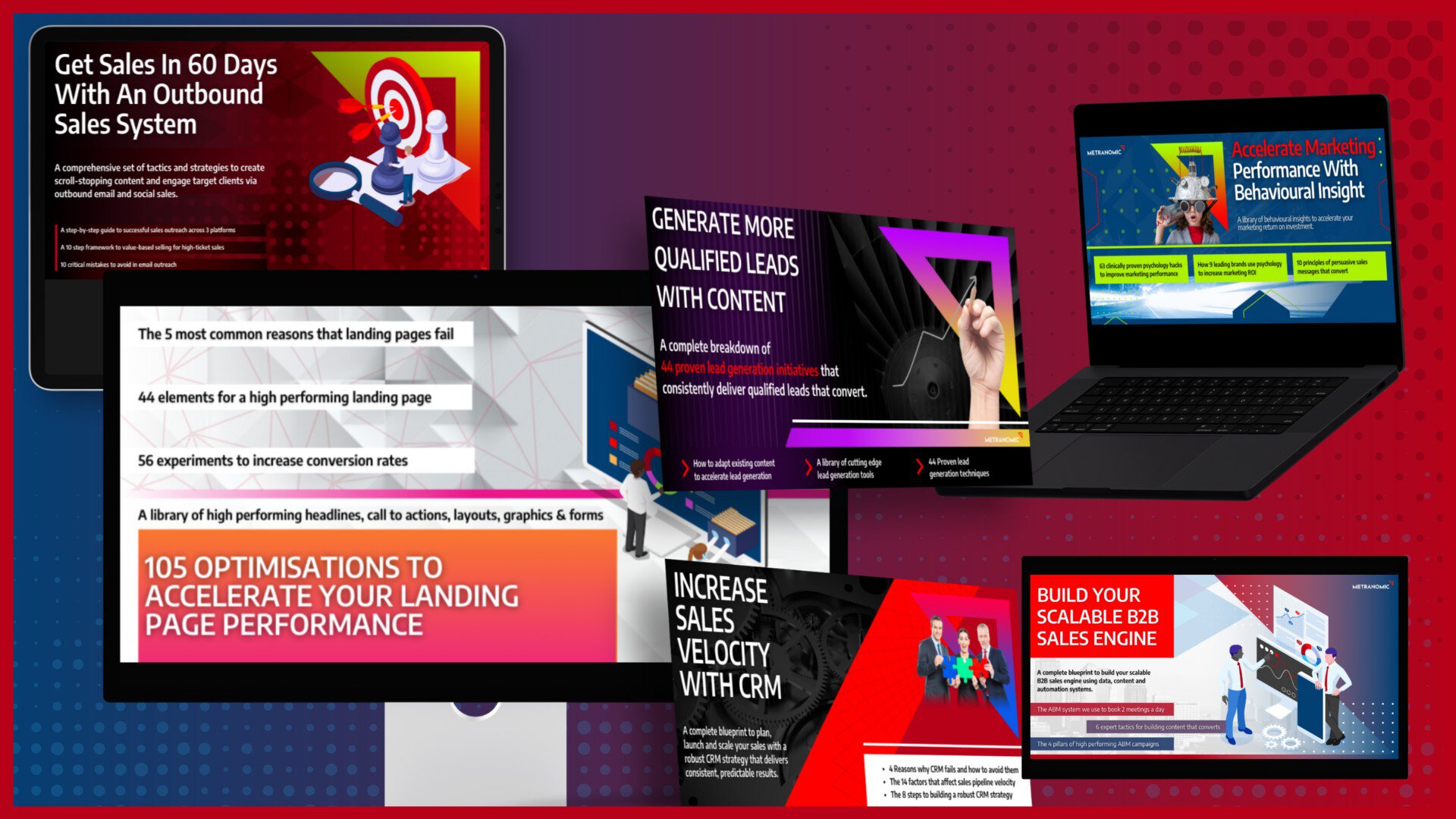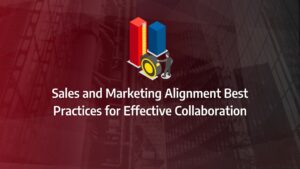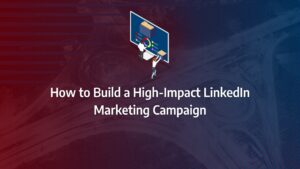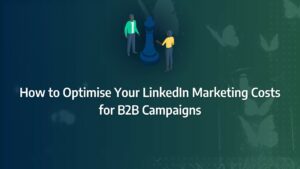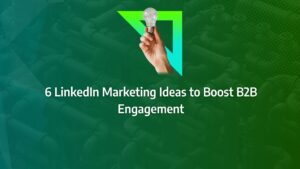Are you struggling to generate high-quality leads without stretching your budget too thin? As a small business, every lead counts, but finding the right tools to capture and convert those leads can be overwhelming. The market is flooded with options, each promising to deliver the results you need.
In this comprehensive guide, we’ll cut through the noise and provide you with a curated list of the best lead generation tools designed specifically for small businesses. From email marketing platforms to CRM systems, we’ll explore the features that matter most and help you choose the tools that align with your business goals
- Choose the Right Tools: Identify and implement lead generation tools that align with your business goals, focusing on features that matter most for small businesses.
- Boost Lead Quality: Leverage the right tools to improve the quality of your leads, ensuring a higher conversion rate and better ROI on your marketing efforts.
- Streamline Processes: Automate and streamline your lead generation processes with tools designed to save time and reduce manual effort, allowing you to focus on growth.
- Overcome Challenges: Learn how to address common challenges such as budget constraints and integration issues when implementing lead generation tools.
- Stay Ahead of Trends: Keep an eye on emerging trends in lead generation, such as AI and machine learning, to ensure your strategy remains competitive and effective.
What is Lead Generation for B2B?
B2B lead generation is the systematic process of identifying and engaging potential buyers who are the ideal fit for your product or service. The goal is to attract these prospects and guide them into your sales funnel, positioning them to become customers. Success hinges on generating interest from the right sources, which makes B2B lead generation an essential foundation for sustainable growth.
While traditionally viewed as a component of a company’s advertising efforts, B2B lead generation extends beyond paid advertising channels. Most businesses now adopt a multifaceted approach, leveraging a combination of:
- Social media outreach
- Email marketing
- Content marketing
- Event marketing
- Pay-per-click advertising (PPC)
- Cold calling
- Website optimisation
Each of these strategies plays a key role in crafting an integrated lead capture system, ensuring that the business can attract and engage the most relevant audience.
What Matters Most?
In our experience, aligning marketing and sales teams around common objectives often leads to improved lead quality and conversion rates. Clients typically discover that focusing on customer segmentation and personalisation can significantly enhance engagement. Additionally, creating a consistent brand experience across all touchpoints fosters trust, which is crucial for nurturing potential leads.Get In Touch
Types of B2B Leads
B2B leads encompass individuals, organisations, or companies that are in a position to become customers for your business-to-business offerings. Unlike B2C (business-to-consumer) sales, where the leads are typically individual consumers, B2B sales often involve businesses as the lead entities. However, it’s worth noting that in some cases, individual professionals or self-run small businesses can also function as B2B buyers.
Although finding B2B sales leads isn’t necessarily more challenging than locating B2C leads, qualifying and converting them into paying customers can be more complex. B2B leads often feel like a puzzle to solve. Many traditional lead generation tools for small businesses only yield generic contact details, such as info@company.com email addresses, which seldom lead to meaningful interactions. After all, very few prospects respond to emails that feel impersonal or irrelevant.
To generate meaningful engagement, your sales team needs qualified B2B leads—those with an identified decision-maker at the other end. This is why simply generating leads is not enough; you must focus on attracting leads that have high potential and are sourced from promising channels, especially by utilising advanced lead generation software.
Marketing Qualified Leads (MQLs)
Marketing qualified leads (MQLs) are prospects identified by the marketing team as potential buyers based on specific criteria. While they may not yet be ready to make a purchase, they have demonstrated interest—perhaps by downloading gated content or subscribing to your newsletters. These are passive leads who may not yet be engaged by your sales team but show the potential to convert in the future with the right nurturing.
MQLs represent an early-stage opportunity. To ensure they progress through your sales funnel, they need to be gradually nurtured with tailored content and outreach efforts, guiding them toward a position where they are ready to engage more deeply with your business.
Sales Qualified Leads (SQLs)
A sales qualified lead (SQL) differs in that they are active leads, having already engaged directly with your company in some capacity. This could be by requesting a demo, sending an email, or contacting your sales team to learn more about your offerings. SQLs are the cornerstone of successful B2B lead generation efforts because they signal immediate interest in purchasing.
SQLs should be prioritised within your sales funnel. The sooner your sales team follows up, the more likely these leads are to convert. Fast-tracking these leads through your sales process ensures a higher probability of closing deals, making the management of SQLs crucial for increasing sales performance. The more efficiently you handle lead generation tools, the greater the impact on overall business growth.
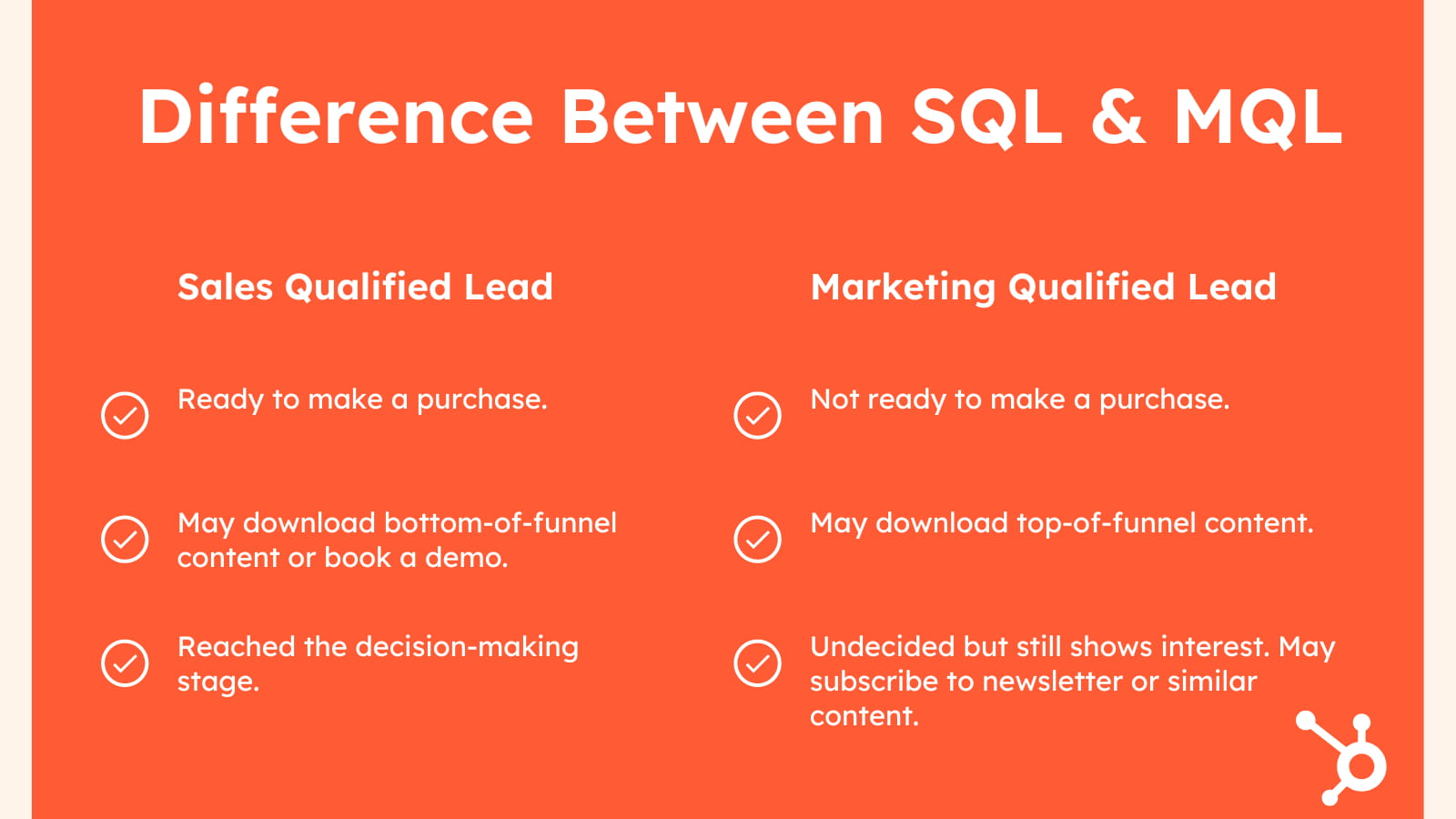
Benefits of B2B Lead Generation
Expand Your Market
When launching your business, you likely focused on a specific target market. However, as your brand grows, it’s essential to evaluate whether this is the only sector you should be targeting. Lead generation allows you to gather insights into your prospects, uncovering new segments of the market that you may have initially overlooked.
Perhaps you’ve begun to notice engagement from organisations or job roles not originally included in your campaigns. By harnessing lead generation tools, you can identify and engage these emerging opportunities, enabling you to expand into new markets that were previously untapped.
Grow Your Following
A robust lead generation strategy relies heavily on the creation of quality content and consistent engagement across social channels. By sharing valuable insights and fostering conversations, you position your business as a thought leader in your industry.
This process naturally cultivates a following of professionals who not only engage with your brand but also spread your content within their networks. Some of these individuals will eventually become customers, while others may turn into brand advocates, amplifying your reach through word of mouth—a vital asset in lead capture systems.
Gather More Customer Reviews
In today’s competitive market, social proof is a critical factor in building trust and driving conversions. Testimonials and reviews from satisfied clients are among the most effective ways to convince potential buyers to take the next step.
However, even with a stellar product or service, reviews don’t always come automatically. Proactively asking your customers for feedback through surveys or follow-up emails can provide you with invaluable testimonials. These reviews can then be featured across your lead generation tools—from website banners to email campaigns, social media posts, and even infographics—boosting credibility and encouraging conversions.
Boost Your Revenue
When implemented effectively, lead generation tools can significantly enhance your ability to reach target prospects. Success depends on crafting the right message, delivering a compelling offer, and creating content that speaks directly to the needs and challenges of your audience.
By using a focused approach that leverages lead generation software, you can engage qualified prospects more easily, which in turn, makes it simpler for your sales team to convert leads into customers. This targeted effort can lead to substantial revenue growth, especially when you’re addressing specific pain points that resonate with your potential buyers.
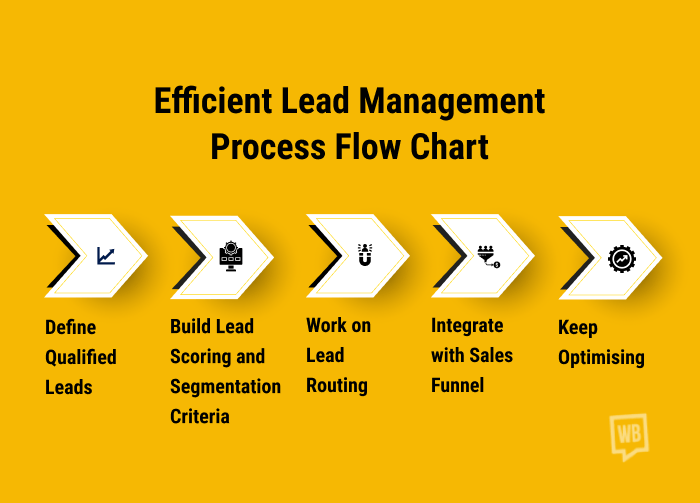
Generate Business Opportunities
Lead generation doesn’t just increase the number of prospects in your pipeline—it can also open doors to new business partnerships. For instance, you might attract the attention of a non-competing brand that proposes a collaboration, such as co-hosting a webinar.
These mutually beneficial partnerships allow both parties to gain access to new audiences. By working together, you can amplify your reach, build credibility, and ultimately drive more leads through shared efforts in lead generation tools for small businesses.
Improve Lead Quality
It’s not enough to simply create content and drive traffic to your website. If those visitors aren’t converting into leads, your efforts are not being fully optimised.
Through a highly targeted lead generation strategy, every piece of content—whether it’s a blog post, email campaign, or social media update—should be crafted with your specific audience in mind. This tailored approach helps ensure that your messaging resonates with your target audience, improving the overall quality of the leads you generate. Higher-quality leads mean better conversion rates, leading to improved sales performance and maximised efficiency of your lead generation tools for small businesses.
Difference Between Demand Generation and Lead Generation
What is Demand Generation?
Demand generation is the structured process of increasing brand awareness and generating interest in your company’s products or services. It’s about creating visibility for your brand and addressing key challenges or pain points that your target market faces, positioning your business as a go-to solution.
A well-executed demand generation strategy focuses on building awareness around these challenges, guiding prospects through their decision-making process, and showcasing your organisation as an industry thought leader. By doing this, B2B prospects gain the confidence to make informed, pragmatic purchasing decisions, knowing that your company can solve the problem they’re facing.
There are numerous approaches to constructing an effective demand generation strategy. Leveraging free resources, such as social media platforms like LinkedIn and implementing organic search engine optimisation (SEO) tactics, can help you expand your reach without overextending your budget. When building out your plan, ensure that your content remains consistent in tone, clearly conveys your product’s value, and speaks directly to the specific gap it fills in the market.
Demand generation requires you to target a broad audience. By casting a wide net, you maximise your brand’s exposure and build trust with those who may not yet be ready to purchase but are gathering information.
Demand Generation vs. Lead Generation
The primary distinction between demand generation and lead generation lies in their respective focuses within the sales funnel. Demand generation sits at the top of the funnel, whereas lead generation takes place further down, closer to the point of conversion.
At its core, demand generation is designed to attract a larger audience, building brand awareness and creating prospects. It’s about broad exposure and education. Once the audience is familiar with your brand and expresses interest, lead generation tools come into play, guiding these prospects towards becoming customers.
Demand generation is about getting as many people as possible into the top of your funnel. At this stage, your target audience is primarily seeking information. Therefore, your content needs to be highly educational, informative, and easy to digest. Effective demand generation helps grow your audience, bringing general-interest visitors to your website while fostering trust in your brand.
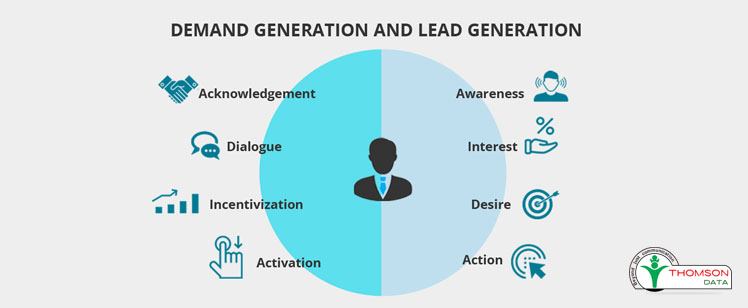
On the other hand, lead generation involves converting that interest into action. Once you’ve built awareness, lead generation techniques focus on deeper engagement, gathering contact information, and nurturing prospects through to conversion. This phase is more targeted, as it involves connecting with prospects, understanding their specific pain points, and providing solutions that drive them towards a purchasing decision.
The relationship between demand generation and lead generation is complementary. Demand generation creates the initial spark, introducing prospects to your brand and its solutions. Once you’ve captured their attention, lead generation tools for small businesses ensure you can nurture these prospects effectively, guiding them through the funnel to conversion.
Ultimately, while demand generation feeds potential leads into the top of your funnel, lead generation takes them deeper, converting interest into tangible customer relationships.
Source: InvespCRO
What Are Some Effective Lead Generation Strategies for B2B Marketers?
Leverage Social Media
Social media isn’t solely the domain of B2C. If you’re not using it for B2B lead generation, you’re giving competitors a head start.
Each platform has its strengths, but when it comes to lead generation tools for small businesses, LinkedIn consistently stands out. With the highest visitor-to-lead conversion rate at 2.74%—compared to Twitter at 0.69% and Facebook at 0.77%—LinkedIn generates 80% of all B2B leads online.
While Facebook also offers significant benefits, especially with its precise targeting capabilities through Lead Ads, Twitter, despite declining user numbers, remains useful for specific B2B lead generation efforts. Constant innovation in lead generation software and best practices across social media means that your sales and marketing teams must remain agile, adapting to the platform that works best for your business.
Follow Emails with Direct Mail
Sending follow-up emails after an initial cold outreach is common practice for a reason. Email campaigns with sequences of four to seven follow-up messages enjoy a 27% response rate, compared to only 9% for those with fewer follow-ups. However, to truly stand out from the crowd, consider breaking away from the expected email-only sequence.
Following up an email with a piece of personalised physical mail can create a memorable experience. Direct mail boasts a response rate of 4.4% versus email’s 0.12%. Sending a thoughtful gift like a branded item or a handwritten note, paired with a compelling invitation for a meeting or video chat, can leave a lasting impression on your target. In this way, lead capture systems become more tactile, human, and effective.
PPC Campaigns
Pay-per-click (PPC) advertising has long been a staple of lead generation tools. Today, PPC strategies have evolved beyond Google Ads to include platforms like LinkedIn, Facebook, and even newer options like Facebook ThruPlay, offering expansive opportunities for B2B marketers.
Why should you keep using PPC? Because it remains one of the most targeted approaches, allowing you to reach a specific, highly defined B2B audience. PPC offers both speed and precision, with the ability to test your campaigns through A/B testing and refine them based on real-time performance data.
But beware—there are best practices for running effective PPC campaigns. Automating certain PPC processes and leveraging responsive search ads can help you optimise performance, while poor management of spend can lead to campaigns that drain your budget without delivering results.
Cold Emails
Cold emailing is not the same as the opt-in email marketing you may already be running. Instead, it’s a targeted strategy to connect with prospects who have not yet subscribed to your communication channels. Given that 8 out of 10 prospects prefer to communicate with sales representatives through email, this method is not one to overlook.
Cold emailing, however, comes with its own challenges. Since these prospects haven’t opted in, your messaging must be especially persuasive, concise, and relevant to their immediate needs. The aim is not just to encourage a click but to provoke a genuine reply. As with all good practices, refining your cold emailing approach comes down to testing and iteration. Shortcuts rarely yield results in this space—only persistence and personalisation drive successful outcomes.
Encourage Employee Advocacy on Social Media
Whilst your social media teams are undoubtedly sharing content across your brand’s official channels, it can be far more powerful to empower your employees to advocate on behalf of your company. This employee advocacy, where your team shares company content on their own social profiles, can significantly amplify your reach.
Encouraging employees to share content has the potential to boost online engagement with your leads by up to 30%. Beyond just generating leads, employee advocacy helps your business appear more human and relatable, while simultaneously elevating your employees as thought leaders within their networks. It’s a win-win situation that strengthens your brand’s credibility and fosters a culture of trust and leadership within the company.
Personalised Videos
Capturing your audience’s attention is nearly the entirety of the lead generation challenge. With attention spans dwindling and competition increasing, standing out requires a highly personalised approach.
In the vast sea of impersonal and irrelevant content, B2B prospects respond best when they feel personally addressed. Personalised videos offer the kind of tailored engagement that cuts through the noise.
Using tools like Vidyard and Idomoo, you can connect your CRM data to populate several customised fields within video messages. This level of automation means you can send thousands of emails, each containing a video uniquely tailored to the individual prospect, creating a bespoke experience at scale.
Given that 80% of respondents are more likely to purchase from a company offering a personalised experience, it’s clear that investing in personalised video content should be a cornerstone of your lead capture systems.
Source: CMI
Free Incentives
Solving a problem for your prospect often proves more effective than focusing purely on selling. By offering a valuable lead magnet—a free incentive in exchange for contact information—you can significantly boost your lead capture efforts.
Your incentive needs to deliver genuine value. Whether it’s an in-depth ebook that tackles industry pain points or a proprietary tool that solves a pressing issue, the offering must exceed expectations. If the incentive is a tool, ensure it provides real utility from day one. If it’s content like an ebook, webinar, or video, make sure the insights are unique and not easily found elsewhere online. Value is paramount to converting prospects into leads and nurturing them through your lead generation tools.
CTA Copy That Highlights Your Value
Whether you’re promoting lead magnets, free trials, or email newsletters, your call-to-action (CTA) must be compelling enough to move prospects towards conversion. Too many B2B landing pages fail to capitalise on their offers with weak, uninspiring CTA copy.
Effective CTA copy works by tapping into prospects’ fear of missing out (FOMO). Make your leads feel like they’re missing something valuable if they don’t take action. Establish your company as the authoritative source of the tools or information being offered, and explain why no one else can provide this solution quite like you.
Additionally, creating urgency—whether through a time-limited offer or a special deal—can heighten the FOMO factor and encourage immediate action. Stick to best practices: keep your CTA concise, clear, and direct, ensuring it stands out in your lead generation tools for small businesses strategy.
Earn Your Buyers’ Trust with Social Proof
Trust plays a vital role in B2B lead generation, and one of the most effective ways to build trust is through social proof. B2B buyers often look for validation in the form of reviews, testimonials, or case studies before making a decision. Social proof reassures them that your product or service delivers on its promises.
Incorporating social proof across your website, landing pages, and social media channels can significantly improve your credibility. Collecting positive reviews on platforms like G2 or showcasing case studies that highlight your impact can help to solidify trust with prospective clients. The more evidence you can provide, the more likely you are to convert sceptical leads into committed customers.
Publish Original Research to Drive Sales
Publishing original research positions your company as a thought leader, offering insights that resonate with savvy B2B buyers. When High-Speed Training published a detailed report tailored to buyers in the hospitality industry, the return on investment (ROI) was immense. Not only did it elevate their authority in the field, but it also increased their visibility, resulting in media coverage from 38 outlets.
On average, B2B buyers consume 13 pieces of content before making a purchase decision. These content pieces include vendor reports, third-party reviews, and in-depth studies. By becoming a source of industry trends and data, you can transform your lead generation strategy.
Providing high-value content helps you:
- Establish yourself as a trusted authority in your sector.
- Generate strong SEO backlinks and PR coverage.
- Deliver genuine value to your prospects.
Target High-Value Leads on LinkedIn
LinkedIn remains the prime platform for targeting high-value B2B lead generation. It offers the ability to hyper-target your audience, making it ideal for businesses with premium products or services. Success stories abound: Templafy generated 25 marketing qualified leads in just one week, achieving an astounding 475% ROI. Reed Exhibitions saw 20% of total revenue for their SNSR expo come directly from LinkedIn, while Matmatch grew their sales pipeline by tenfold using the platform.
While LinkedIn’s cost-per-click (CPC) may be higher than other platforms, the ability to reach a specific audience makes it well worth the investment, particularly for premium B2B products where the lifetime value (LTV) is high enough to justify the budget.
If you plan to advertise on LinkedIn, ensure that you’re offering:
- A premium B2B product or service that benefits from the platform’s highly targeted advertising.
- High-level educational content that resonates with the career-focused, skill-driven nature of LinkedIn members.
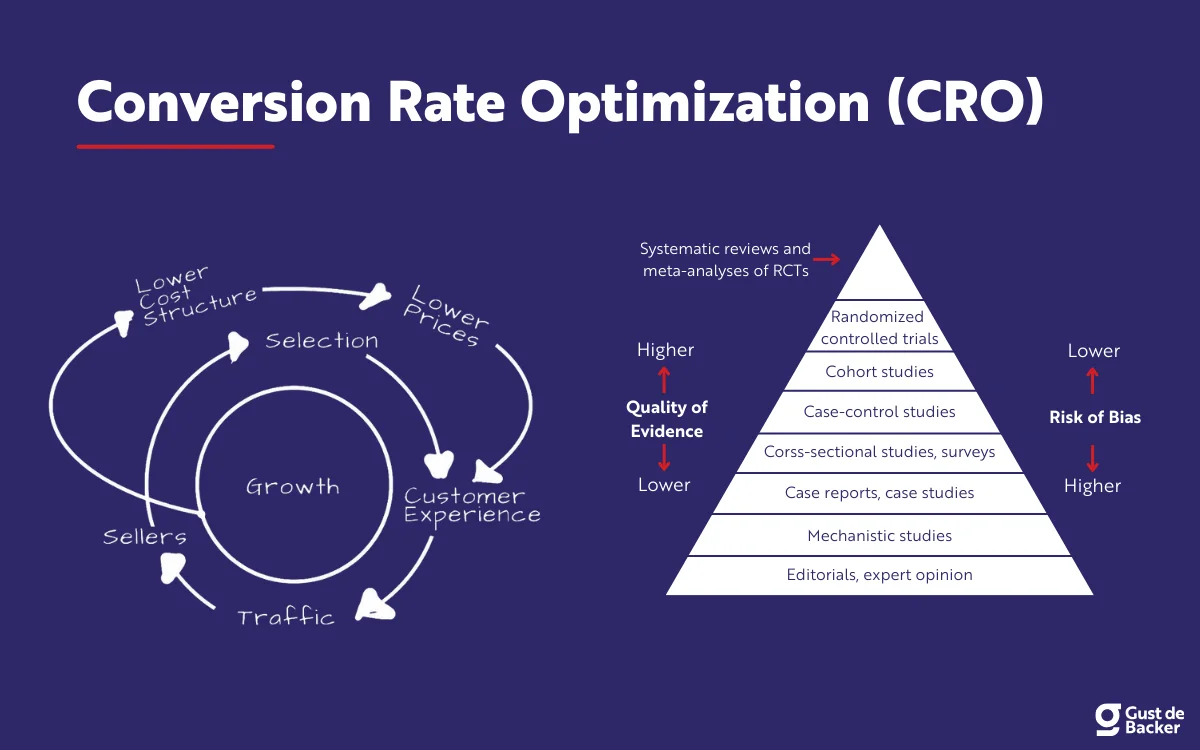
What Are the Best Free Tools for Lead Generation?
1. Trustmary
Trustmary is a powerful lead generation software designed to help you harness the power of social proof through reviews and testimonials. By showcasing positive feedback from customers, Trustmary enhances trust and credibility, essential elements in converting leads.
The free version, Trustmary Solo, offers a range of useful features, including:
- Adding existing reviews from platforms like Google, Facebook, TripAdvisor, and Yelp directly to your website.
- Creating unlimited lead generation and review widgets.
- Collecting fresh reviews and customer feedback to keep your social proof dynamic and relevant.
Quick Steps to Getting More Leads with Trustmary:
- Sign up and access the Trustmary dashboard.
- Choose whether to display existing third-party reviews or collect new ones using Trustmary.
- Select the source of your reviews (e.g., Google or Facebook) and provide the relevant URL.
- Trustmary will generate a review widget that you can easily copy and paste into your website.
Displaying these reviews strategically on your website improves your credibility and helps you generate more leads by showcasing your brand’s trustworthiness through lead capture systems.
2. Wiza
Wiza is a comprehensive lead generation tool that offers access to a B2B lead database of over 830 million leads, complete with real-time verified email addresses, phone numbers, and up-to-date employment details.
With Wiza, you can search the database using specific filters such as job title, company, location, and more than 30 advanced data points. Once you’ve identified the right leads, Wiza allows you to organise them into lists and export the data to CSV or sync it with your CRM for targeted outreach and data enrichment.
A standout feature is the free email finder Chrome extension, which enables you to reveal contact information while viewing LinkedIn profiles. The extension also integrates with Sales Navigator and LinkedIn Recruiter, making it easy to bulk export lead searches, complete with contact data.
What You Get with Wiza’s Free Version:
- 25 free leads per month (20 email credits + 5 phone credits).
- Access to a searchable database of over 830 million leads, including real-time verified information.
- Free Chrome extension for finding emails and phone numbers on LinkedIn.
- Live chat support with an average response time of 12 minutes.
- Knowledge base and detailed help documentation.
Wiza provides one of the most robust lead generation tools for small businesses, enabling users to capture high-quality leads with minimal cost.
3. FindThatLead
FindThatLead is another excellent prospecting tool for B2B businesses, offering features that help identify qualified leads based on your specific criteria. Once you’ve compiled a list of prospects, the software supports sending targeted cold emails to generate interest.
What FindThatLead Offers in Its Free Version:
- Up to 50 leads per month.
- Support for 1 user.
- Integration with Zapier for workflow automation.
- Chat support and access to a detailed help documentation library.
FindThatLead is particularly useful for businesses looking to send highly targeted cold emails as part of their lead generation tools strategy.
4. Sumo
Sumo is an email marketing tool designed to help businesses grow their email list and automate email campaigns. For lead generation, Sumo excels at helping businesses build their subscriber base, making it a valuable resource for engaging potential leads.
With the free version of Sumo, you can send up to 10,000 emails per month, giving you ample opportunity to convert website visitors into qualified leads.
Features Included in Sumo’s Free Version:
- Support for unlimited users.
- Integration with Zapier.
- Email support and help documentation.
Sumo’s robust email marketing features make it a strong addition to your lead generation software stack, particularly if you are looking to engage prospects consistently.
5. Hotjar
Hotjar is a fantastic tool for understanding customer behaviour on your website. It helps businesses make better decisions by visualising where visitors click, what they look at, and how they interact with different page elements. This insight can be vital for improving user experience and, by extension, increasing conversions.
Hotjar also allows you to conduct feedback surveys and manage on-page lead generation activities. The free version offers 35 sessions per day with unlimited users, giving you enough data to make informed decisions about how to optimise your website for lead capture.
Free Version Includes:
- Up to 35 user sessions per day.
- The ability to create and store 3 surveys and feedback widgets at a time.
- Access to help documentation (though no direct personal support).
Hotjar’s feedback tools, coupled with its session recording capabilities, provide deep insights that help you refine your lead generation tools by understanding exactly how visitors are interacting with your site.
Our Tactical Recommendations
From our experience, implementing retargeting adverts is an effective way to re-engage leads who have previously interacted with your content but did not convert. Clients often find that establishing a clear follow-up process with multiple touchpoints can increase conversion rates significantly. We recommend utilising automated email campaigns to nurture segmented leads, ensuring tailored messaging reaches the right prospects.Get In Touch
What Are Some LinkedIn Alternatives for Generating B2B Leads?
1. Job Search Websites
While job search sites are commonly associated with CV submission, they can also serve as a valuable resource for finding B2B leads, particularly for independent contractors, consultants, and freelancers. Casting a wide net is essential when seeking out warm leads, and job websites offer a platform to explore various opportunities.
Many job search websites are specifically designed to help entrepreneurs and freelancers connect with potential clients. These platforms allow you to refine your search by industry, location, and specific requirements, ensuring the leads you find are relevant to your field of expertise.
For instance, if you’re a freelance web developer in London, you can utilise a platform like Indeed to locate projects or leads that align with your skills. Once you identify promising leads, you can either apply directly via the website or reach out to the company personally for further engagement. This proactive approach is a key element in building an effective lead generation strategy.
2. Twitter
Twitter offers a less conventional but highly effective way to find B2B leads outside of LinkedIn. By following relevant industry accounts and participating in Twitter chats, you can build relationships with potential clients and customers. The platform’s search functionality also enables you to identify people expressing interest in the products or services you offer.
For example, if you run a catering business, you could search for tweets mentioning terms like “wedding” or “corporate event.” By responding directly to these tweets, you can introduce your services and make connections with potential clients. Additionally, Twitter can help boost your brand visibility, positioning you as a go-to expert in your field while supporting lead generation tools.
3. Website Communities
Niche website communities like GrowthHackers and SalesHacker provide a focused environment for engaging with professionals facing similar business challenges. These platforms can be excellent for generating leads, as they allow you to interact with like-minded individuals who are likely to need the solutions you provide.
If you sell health or medical products, for example, you could join relevant online communities or forums where professionals in the healthcare industry congregate. From there, sharing insightful articles, answering questions, and contributing to discussions can help you establish authority. Over time, as relationships are built, members of these communities will view you as a trusted resource, increasing the likelihood that they will turn to you when they’re ready to make a purchase.
These platforms operate similarly to lead capture systems, enabling you to draw in leads by building genuine relationships rather than relying solely on traditional outbound strategies.
4. Slack
Slack, known primarily as a team communication tool, can also be a productive avenue for generating leads—if used correctly. Many Slack communities are filled with individuals looking to sell their products or services, which can be off-putting. However, by offering genuine help and expertise without a hard sell, you can effectively use Slack to generate leads.
For instance, if you are a web developer, joining a Slack group focused on web development allows you to offer advice or assistance to other members. Over time, as you develop a reputation as a knowledgeable and helpful professional, others in the group are more likely to approach you when they need services. This method builds trust and demonstrates your expertise without coming across as pushy or sales-driven, making Slack an excellent tool for lead generation software applications.
5. YouTube Comments
YouTube comments may seem like an unconventional place to find B2B leads, but they can be surprisingly effective. People often engage in the comments section of videos related to their business needs or interests, providing an opportunity for direct engagement.
To leverage this strategy, first, find a video that relates to your product or service. For instance, if you offer software solutions, locate a video discussing relevant topics, such as software reviews or industry trends. Then, engage with users in the comments section who seem interested in the subject matter, offering valuable insights or assistance. Once you’ve established rapport, you can transition to private messaging to offer your product or service directly.
This approach works particularly well for service providers but can also enhance your brand’s visibility and reputation, supporting broader lead generation efforts.
6. Review Websites
Review websites, such as G2 and Capterra, are valuable platforms for both consumers and businesses. They provide concise, unbiased reviews of various products and services, helping potential buyers make informed decisions. For businesses, these sites offer an opportunity to generate leads by reaching out to users who have reviewed your competitors’ products.
If you’re a software company looking to expand your customer base, searching for relevant keywords on review platforms like G2 can help you identify leads. Once you’ve located individuals who have reviewed similar products, you can engage them with an offer to try your software—whether through a free trial or by providing more information on how your product can meet their needs. This targeted outreach forms an integral part of a well-rounded lead generation strategy, especially for businesses aiming to build trust with highly informed prospects.
